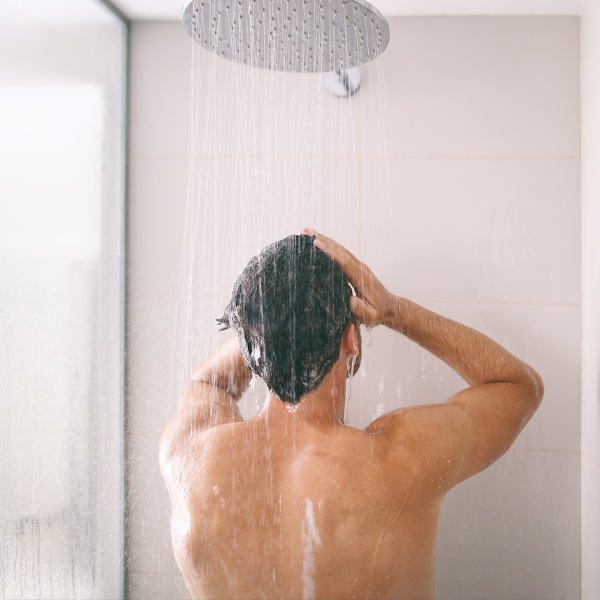When we think of Dry January, it’s usually because we’re contemplating a month of abstinence or sobriety following the overindulgence of Christmas.
But what if Dry January had a totally different meaning…?

When we think of Dry January, it’s usually because we’re contemplating a month of abstinence or sobriety following the overindulgence of Christmas.
But what if Dry January had a totally different meaning…?
Dry January doesn’t just mean a break from the booze; for many, it’s more a case of Dry SKIN January!
Winter and the colder months can ravage our skin if we’re not careful, and the guaranteed mix of cold air, followed by blasting dry, indoor heating coupled with a lack of humidity, can leave it dry, flaky, and often, cracked and sore.

DR BK Clinic provides a simple and easy-to-understand explanation of the impact cold temperatures have upon our skin, but what steps can we take to winter-proof it and keep the damage to a minimum, or better still, prevent it altogether?
Choose wisely
It’s not uncommon to change your skincare routine during colder months and, in doing so, change the products you use. What works for us in the warmer, sunnier months is pretty unlikely to give skin what it needs in the winter.
Dermatologist and RealSelf contributor Dr. Michele Green suggested to INSIDER the different considerations you should make when choosing your winter skincare products, including the consistency, moisturising properties, and ingredients of a product.
When looking for a different handwash, shower gel, cream, moisturiser (the list is endless), just make sure you check it’s right for you as what works for you may not work for me.

Turn up the heat…but not too much!
While hot baths and showers can be soothing, that’s the last thing your skin needs (or wants) in the winter.
Dr. Jessica Krant, a board-certified dermatologist with the American Academy of Dermatology, recommends lukewarm showers and baths as excessive temperatures strip the skin’s natural oils, causing damage and irritation.
A simple rule of thumb; if you leave the bath or shower and your skin is red, then it’s too hot…and not just during Dry Skin January; that’s all year round.
Give some thought to your indoor temperature as this dry, humidity lacking air will also have an impact upon your skin. The temperature on the indoor heating understandably rises in the winter months, and we can’t really prevent that. However, the National Eczema Society suggests placing a bowl of water near radiators to offset the heat’s drying effect on our skin.
Work at it day and night
There’s no limit to the number of times you can moisturise your skin during the long, cold, winter days, and too much is never going to be a bad thing, is never going to damage your skin, and the drier it is, the more it will thank you for continuously replenishing it’s lost moisture.
Minimising Dry Skin January isn’t just about what you do to protect your skin during the day; the steps you take at night are critical to healthy winter skin.
Our skin repairs itself overnight, so think about applying a thicker cream. While they can take longer to be absorbed, the correct cream can be the difference between replenished and moisturised skin (as well as a good night’s sleep) and dry, dehydrated skin, day after day.
Wrap up…but not too much
When the temperature drops, we wrap up. We wear our thickest, warmest clothes designed to keep the heat in and the cold out.
However, tight or heavy clothing is not only restrictive but will prevent our skin from breathing naturally. The temperature increase and heat retention will result in itchy, dry skin added to that wool or woolen mixture, which if you already have sensitive skin, will only aggravate it further.
The National Eczema Society suggests layering clothing so you can adjust your body temperature to suit you. They also recommend avoiding materials that can cause scratching to give you the best chance of an irritation-free winter.
Your hands need TLC too.
The skin on your hands is just as vulnerable during the winter as your facial skin; that’s why it’s so essential you give them as much TLC as everywhere else.
London dermatologists, Londerma suggest five simple steps to looking after your hands, and there’s a common thread:
Similar to your product selection – check the ingredients of your handwash and ditch scents and bubbles. Emollient creams are great soap substitutes!
Similar to your bath – warm water is more than enough.
Similar to the rest of your body – moisturise after washing.
Similar to your nighttime routine – go thick at night time.
Similar to your clothing – make sure your gloves are the suitable material.
It’s safe to say that caring for your skin during the winter takes a little more time and effort. While we may be tempted to opt for heavy products ladened with oil and unnecessary ingredients they won’t repair any damaged skin or, more importantly, protect it. Equally so, while we can’t control the temperature outdoors, we can control how we react to it. A change in routine, a better-suited product, and an understanding that prevention is better than cure, will go a long way and quite possibly result in Dry SKIN January becoming a thing of the past.